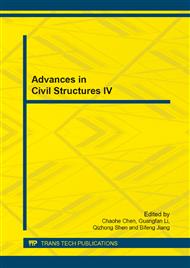p.523
p.527
p.532
p.536
p.540
p.546
p.550
p.555
p.559
Comparative Analysis of Different Modeling Methods for Sandwich Plates Based on LS-DYNA
Abstract:
Based on LS-DYNA, this paper compares four modeling methods for sandwich plates, e.g. the layered shell element, the solid and shell mixing element, the shared-node shell element and the thick shell element. Four modeling methods are used to simulate sandwich plates with different thickness-to-span ratios and different mesh sizes. The comparative analysis of the relationships between the mesh size, the CPU time and the convergence rate of the accuracy of four methods shows that the layered shell element and the shared-node shell element can accurately simulate sandwich plates with high efficiency.
Info:
Periodical:
Pages:
540-545
Citation:
Online since:
July 2014
Authors:
Keywords:
Price:
Сopyright:
© 2014 Trans Tech Publications Ltd. All Rights Reserved
Share:
Citation:


